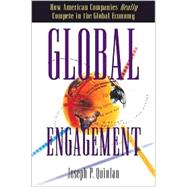
Note: Supplemental materials are not guaranteed with Rental or Used book purchases.
Purchase Benefits
What is included with this book?
| Acknowledgments | ix | ||||
| Introduction | xi | ||||
| Key Terms and Definitions | xvii | ||||
| Part I: Setting the Global Stage | 1 | (74) | |||
|
5 | (16) | |||
|
7 | (2) | |||
|
9 | (4) | |||
|
13 | (4) | |||
|
17 | (4) | |||
|
21 | (24) | |||
|
22 | (5) | |||
|
27 | (6) | |||
|
33 | (4) | |||
|
37 | (4) | |||
|
41 | (4) | |||
|
45 | (30) | |||
|
46 | (2) | |||
|
48 | (2) | |||
|
50 | (1) | |||
|
51 | (1) | |||
|
52 | (1) | |||
|
53 | (2) | |||
|
55 | (4) | |||
|
59 | (4) | |||
|
63 | (4) | |||
|
67 | (1) | |||
|
68 | (2) | |||
|
70 | (3) | |||
|
73 | (2) | |||
| Part II: U.S. Global Engagement Through Foreign Direct Investment | 75 | (82) | |||
|
79 | (24) | |||
|
80 | (2) | |||
|
82 | (2) | |||
|
84 | (1) | |||
|
85 | (1) | |||
|
86 | (4) | |||
|
90 | (2) | |||
|
92 | (2) | |||
|
94 | (2) | |||
|
96 | (2) | |||
|
98 | (3) | |||
|
101 | (2) | |||
|
103 | (26) | |||
|
104 | (1) | |||
|
105 | (1) | |||
|
106 | (1) | |||
|
107 | (8) | |||
|
115 | (3) | |||
|
118 | (2) | |||
|
120 | (5) | |||
|
125 | (4) | |||
|
129 | (28) | |||
|
130 | (1) | |||
|
131 | (1) | |||
|
132 | (3) | |||
|
135 | (2) | |||
|
137 | (1) | |||
|
138 | (1) | |||
|
139 | (3) | |||
|
142 | (4) | |||
|
146 | (3) | |||
|
149 | (2) | |||
|
151 | (3) | |||
|
154 | (3) | |||
| Part III: Unique Dimensions of U.S. Global Engagement | 157 | (78) | |||
|
161 | (26) | |||
|
163 | (2) | |||
|
165 | (3) | |||
|
168 | (3) | |||
|
171 | (2) | |||
|
173 | (4) | |||
|
177 | (3) | |||
|
180 | (4) | |||
|
184 | (3) | |||
|
187 | (18) | |||
|
188 | (2) | |||
|
190 | (2) | |||
|
192 | (4) | |||
|
196 | (4) | |||
|
200 | (3) | |||
|
203 | (2) | |||
|
205 | (30) | |||
|
207 | (3) | |||
|
210 | (5) | |||
|
215 | (9) | |||
|
224 | (4) | |||
|
228 | (3) | |||
|
231 | (4) | |||
| Epilogue | 235 | (4) | |||
| Notes | 239 | (14) | |||
| Bibliography | 253 | (8) | |||
| Index | 261 |
The New copy of this book will include any supplemental materials advertised. Please check the title of the book to determine if it should include any access cards, study guides, lab manuals, CDs, etc.
The Used, Rental and eBook copies of this book are not guaranteed to include any supplemental materials. Typically, only the book itself is included. This is true even if the title states it includes any access cards, study guides, lab manuals, CDs, etc.